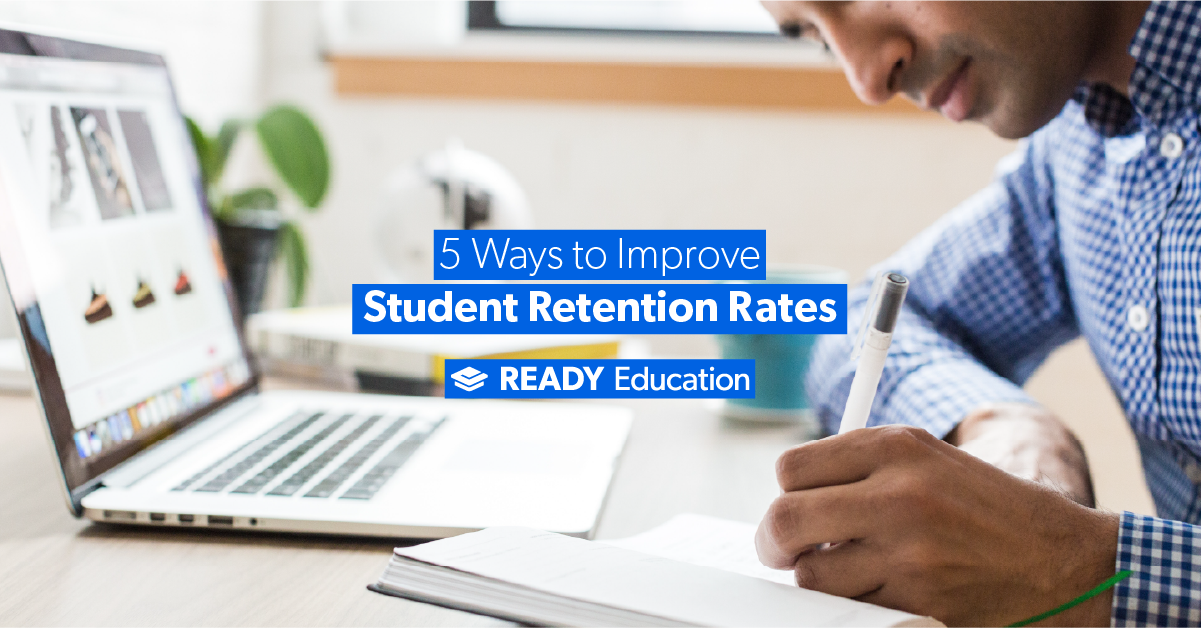5 Ways to Improve Student Retention Rates
By: Ready Education on Dec 19, 2022 5:51:28 AM5 Ways to Improve Student Retention Rates
By: Ready Education on Dec 19, 2022 5:51:28 AM
Improving student retention rates is vital for institutions. An alarming number of students don't make it to their graduation after dropping out of college or university, usually within the first year.
Despite the trials and tribulations of choosing the right institution, going through the application process and eventually enrolling at college or university, financial strain, mental health struggles, burnout, and stress contribute to student dropouts.
There are several things institutions can implement to help improve student retention figures. In this blog, we've highlighted five ways you can decrease student dropout rates.
- Offer support and guidance early
Entering further and higher education can be a daunting prospect for any student. Your institution will undoubtedly have orientation procedures that welcome and integrate students into college and university life.
Hopefully, most of your students will enter your institution with some understanding of what is expected of them before they start their academic journey. However, support and guidance are just as crucial before they even walk through the door.
Simple things from student roadmaps, access to timetables, induction communications, and social connection pages help to begin the acclimation process early. For students to have this information, no matter how obvious, it provides them with a vital support system from admission to graduation. As data shows, students are most likely to drop out of college in their first year. Therefore, welcoming them with helpful guidance before they enter your institution helps acclimate students to student life more quickly.
- Identify at-risk students early
Once an institution applies an early approach to the student onboarding process, it allows them to offer support and guidance before students start their educational journey. By communicating with students from an early stage, institutions can identify students who could be at risk of dropping out.
Using metrics such as attendance and performance while monitoring student engagement will help identify at-risk students. These early interactions provide essential insights into any signs of trouble. The earlier these struggling students are identified, the better their chance of getting back on track, improving student retention and success.
- Support the diverse needs of students
Students require guidance and support throughout their academic journey, but each student's needs differ individually and generationally. Institutions must offer help on issues other than the usual themes of finance, stress and personal problems.
Undoubtedly your institution will have systems in place to deal with every issue. But diverse issues such as mental health, race, equality and gender identity are prominent topics in students' lives. Institutions must be prepared to address these subjects in the most effective and sometimes sensitive way possible, so that students' individual needs are continuously supported.
- Listen to and utilize the Student Voice
If an institution listens to students' voices and hears what they have to say, it creates an environment of understanding and respect. Utilizing the student voice and ensuring students have regular opportunities to share their concerns and needs is integral in delivering a high-quality student experience.
Providing platforms for students have their voices heard strengthens their sense of belonging and builds a connection with the institution. This connection between students and institutions is critical in decreasing student dropout rates.
- Take a mobile-first approach to improve the student experience
Everything mentioned above is achievable by taking a mobile-first approach when tackling student retention rates. The majority of today's students already use smartphones extensively. Students spend an average of 8-10 hours a day on their smartphones, so it makes sense for institutions to start leveraging mobile as a channel for supporting the various needs of students in a personal and individual way.
The channels available through this approach are a great way to accomplish the challenges of student retention. Support systems, student communities and open communications are accessible at their fingertips, 24/7.
Most institutions have a student mobile app in use, but many need to be updated to fit the needs of their students. Evolving with the times and using the available technology will help institutions meet today's students' expectations. Adopting an effective platform for students to use and feel supported will help improve student retention.
If you want to know more about improving student retention at your institution, check out our latest guide to learn more!


.png)
.png)
.png)

